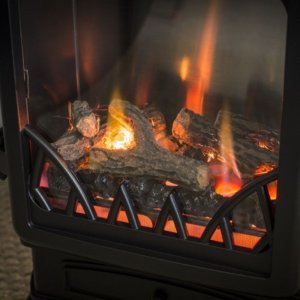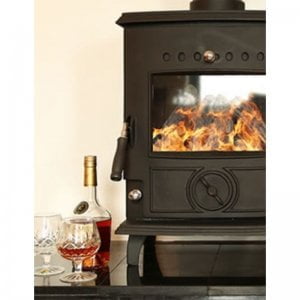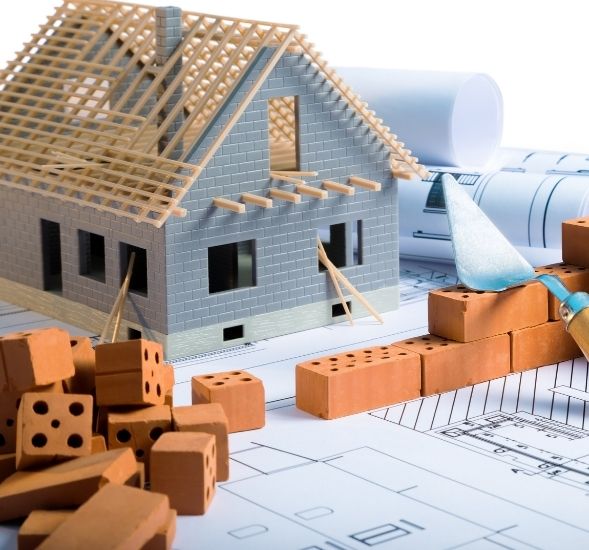What is the Best Solid Fuel Stove?
If you’ve already decided you want to install a solid fuel stove in your house then you’ve probably done some research online or even gone into your local hardware store or stove supplier. Hopefully, this article will give you the reassurance you need to go ahead and make that investment. If you haven’t done any research yet then this article may provide you with the knowledge you need to ensure you choose the right stove for your home and your budget.
Why Install a Solid Fuel Stove?
Quite simply, if you’re going to heat a room or rooms with solid fuel, a stove is an extremely efficient way of maximising the heat output for the financial input. In other words, instead of putting timber, peat or coal into an open fire and have 60%-70% of the heat go up the chimney if you burn that fuel in a stove, you’ll save more fuel and burn less money!
Why is a Solid Fuel Stove More Efficient?
With a solid fuel stove, you have more control over the oxygen getting to your fuel and hence you can make your fuel last longer. Also, you can control your flue and keep more of the heat in your stove and boiler rather than just letting it all go up the chimney – remember hot air rises!!!
If you would like to use your stove to heat your domestic water and radiators in other rooms then you can get a boiler stove and thereby distribute the heat throughout your house by utilising your existing central heating system.
Put simply, if you install a solid fuel stove you could reduce your fuel bill and make your house warmer at the same time. It’s a no-brainer!

What Type of Stoves are There?
There are lots of different types of stoves out there and tonnes of different brands. To simplify things, I’ll break it down into two main categories – dry stoves (or non-boiler stoves) and boiler stoves (HPB stoves).
- A dry stove (sometimes referred to as a non-boiler stove) is a stove that has no boiler. Its main purpose is to heat the space in which it’s installed only. Typically, this could be a living room or kitchen, but it could be installed in an open-plan space with no dividing walls. Strategically placed and with the correct size chosen, a dry stove could heat a large open space in a house up to half the living area – depending on the size of the house.
- A boiler stove (sometimes referred to as a High-Power Boiler stove) is – you guessed it – a stove that has a boiler. This type of stove has two functions – one to heat the space in which it operates and also to heat the domestic hot water and or other rooms by tapping into the central heating system.
Stoves can be made from all cast iron, or all steel or a mixture of both. The characteristics of the metals dictate how each stove performs and lasts. To summarise, cast iron takes longer to heat up but holds the heat longer whilst steel heats up faster but also loses its heat quicker. Some stove manufacturers such as Blacksmith Stoves use cast iron in their grates containing relatively large quantities of chromium which gives greater longevity. Remember, stoves parts can burn out and need to be replaced. This can be a hidden cost and manufacturer’s warranties vary so watch out when deciding which stove to buy.
Stoves come in lots of different shapes, sizes and finishes. A free-standing stove as the name suggests is on a set of four legs and usually either sit on a hearth or plinth and usually heats the room by conventionally heating the air around it which circulates the room naturally or with the aid of a stove fan. An insert stove is a less intrusive device and appears more subtly in the fireplace by having most of its surface area nestled back into the fireplace with only its face and a small portion of its bulk protruding into the room. There are other types of stoves such as double-sided which are fitted into a chimney stack shared by two rooms whereby each room can be heated and the fire also accessed via a door on each side. This type of stove, as well as insert stoves, can be installed at different heights depending on the model chosen.
The finishes of each type of stove are typically enamel or matt. An enamel finish is easier to clean and usually comes in different colours; although black is still the preferred colour with our customers! Matt is a more traditional finish and some customers love it! However, it can be more difficult to clean but when polished up with a great polish, it can look fantastic. Some insert stoves, and double-sided stoves come in stainless steel or brushed nickel finishes which can provide a very contemporary look.

Questions to Ask Yourself When Dealing with Stoves
So you’ve finally decided to pull the trigger and join the community of stove owners. With an overwhelming amount of choices available, it can be difficult to choose which is best for you and your family. This is why it’s best to lay your options and ask questions that will help you ultimately decide the best one for your needs.
What stove best suits my requirements and budget?
I often get asked, “I want to put in a stove but I don’t know whether I should get one with a boiler or not, what do you think?”. This can be answered in a number of ways and there is no one size fits all approach but I can guide you in a few ways.
If you use a lot of hot water and if you use oil-fired central heating in your home it is well worth considering an HPB stove. However, you will need to consider the following things:
- To heat your domestic hot water, you may need a new hot water cylinder that has an extra coil, as the stove will send hot water to this coil to heat the water in the cylinder. I would strongly advise in this scenario to purchase a larger cylinder than you already have in order to best use and store the extra hot water you’ll be creating.
- Usually (but not always) the hot water cylinder needs to be higher than the stove e.g. on the first floor. There are ways around this if necessary and an experienced plumber can advise you.
- In order to connect your boiler to your central heating, the flow and return pipes from the stove will need to “tap” into the flow and return of your existing heating system. (Flow is the hot water being sent out by the stove and Return is the cooler water coming back into the stove after it’s finished its trip around your radiators!). This may involve taking up floorboards and/or concrete floors. Your plumber will advise you on this.
If all of the above seems like too much of upheaval and you’re happy just to have your oil boiler heat your radiators then go ahead and look at installing a non-boiler stove.
With non-boiler as well as HPB stoves you need to ensure you choose the correct size of the stove. Obviously, the physical size has to be considered i.e. will it fit on my hearth or do I need to install a hearth or some other kind of plinth such as a tiled platform. Also, how much space into which the stove that will be installed will play a huge factor. A huge 30kw stove is going to look huge in a 3-metre square room – not to mention how uncomfortable all that heat will be! Which brings me to the next question – how do I size my stove?
How do I size my stove?
I’d like to be able to give a scientifically accurate answer to this but you would need to have a doctorate in thermodynamics to give a comprehensive answer. What I can tell you, and this is based on practical experience is the following:
For a dry stove in a house built prior to 2012, with an average-sized room to heat – say 3.6m x 4.0m x2.4m you should go for a minimum of a 5-6kw stove and for much older houses a stove up to 8kw should be considered. The larger the space, the more power you need. You could go up to a 21kw non-boiler stove which would heat the equivalent of a kitchen/dining/living area in a large house. As I said earlier it’s hard to give definitive advice on this and I suggest you speak to a qualified plumber who can calculate the BTU requirements for the proposed space requiring heating. The position of the stove is very important and if you plan on heating a large area then the stove should be centrally located to give the optimal results in the distribution of heat.
The advertised heat output of HPB stoves is split between heat to room and heat to a boiler. A typical Henley Druid 21kw stove – one of our most popular stoves – will give 5kw of heat to the room and 16kw of heat to the boiler. The output of most multi-fuel stoves is rated based on burning coal (or smokeless coal) so if you plan to just burn peat or timber, the performance of such as stove will be less. Having said that a stove like this with the correct fuel will provide comfortable heat to an average-sized room whilst the power of the boiler will easily heat the domestic hot water and also heat 8-10 radiators depending on their size.
You may find this an incomplete answer but as I said earlier in the article each house is different and indeed more recently built houses will have greater heat conservation built into their design and will need smaller heat capacity stoves to comfortably provide heat.
How much work is involved?
For HPB, NB, free-standing and insert stoves they each need to have their flues set up correctly. Also, the hearth, fireplace etc. need to be considered and a good tradesman can easily sort these things out. With a little imagination and help from your local or online builders’ merchants, you could be the envy of your neighbours with a tastily designed stove installation.
Before you install a stove though, I strongly advise you get a flue professional to inspect your chimney to ensure it’s suitable and safe.
A correctly installed flue will contribute to the overall efficiency of the stove. Each stove has a recommended flue size and therefore if you maintain that flue size the whole way to the chimney pot you will achieve the greatest efficiency. If you have a large flue in your house you can reduce the size by installing a flexible flue liner in the chimney thereby increasing the efficiency of the stove. There are other types of flue pipes you can use also. A word of warning though – you should never install a flue smaller than the one recommended by the stove manufacturer as this could lead to dangerous fumes including Carbon Monoxide escaping from the stove or could increase the risk of chimney fires as well as other hazards.
We stock a full range of flue fittings and can give expert advice on what is the best flue system for you.
As I outlined earlier there is a lot more work involved in the installation of an HPB stove and accordingly, the cost involved is greater. However, the upside of heating more rooms, as well as your hot water, is a tempting prospect.
Finally, I hope this has given you some idea as to what’s involved in the installation of a stove and with a bit of luck you will purchase the right stove for your home and achieve many years of comfort and save a lot of money at the same time!
You can explore our range of stoves available throughout Ireland here – and remember that we offer free delivery on all orders over €150!
If you would like to buy the best stove in Ireland, or even just further advice, you can call us on 071 91 83318 or send an email to sales@mybuildingsupplies.ie. All our stoves are available to buy online and we have a full range of hearths, fireplaces, flues, cylinders, plumbing fittings and much more.
My Build Club
Calling all Trades Professionals, Self Builders, Renovators and DIY lovers!
We have created an entirely unique section of our website that has been designed to make your life easier.
Enjoy discounts, get an even more enhanced level of customer service, find all your paperwork easily and get unique offers and deals regularly.
My Build Club is a brand new innovative service for all Self Builders, Renovators, Trade Professionals and DIY lovers in Ireland.
We have revolutionised how you can source the right products at the very best prices along with putting you in touch with real life experts to help you every step of the way.
Why join today?
- Save money and time when sourcing the supplies you need
- Get Trade discounts just like you would at our Trade Counter
- On demand support from our experts – video calls, live chat and phone support
- All of your paperwork and invoices in the one place
- Arrange fast delivery – including to work sites



This Post Has 0 Comments